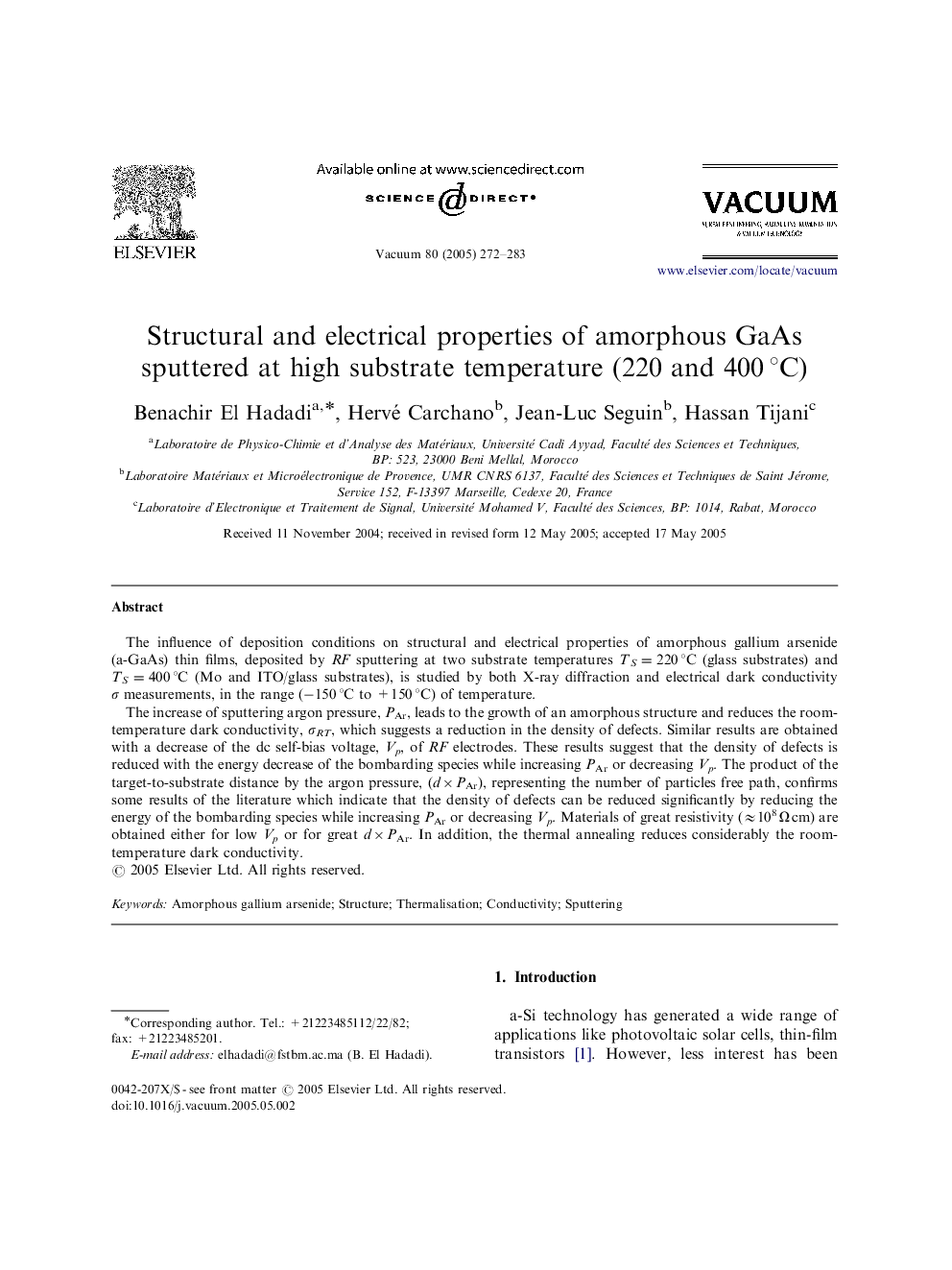| Article ID | Journal | Published Year | Pages | File Type |
|---|---|---|---|---|
| 10676154 | Vacuum | 2005 | 12 Pages |
Abstract
The increase of sputtering argon pressure, PAr, leads to the growth of an amorphous structure and reduces the room-temperature dark conductivity, ÏRT, which suggests a reduction in the density of defects. Similar results are obtained with a decrease of the dc self-bias voltage, Vp, of RF electrodes. These results suggest that the density of defects is reduced with the energy decrease of the bombarding species while increasing PAr or decreasing Vp. The product of the target-to-substrate distance by the argon pressure, (dÃPAr), representing the number of particles free path, confirms some results of the literature which indicate that the density of defects can be reduced significantly by reducing the energy of the bombarding species while increasing PAr or decreasing Vp. Materials of great resistivity (â108 Ω cm) are obtained either for low Vp or for great dÃPAr. In addition, the thermal annealing reduces considerably the room-temperature dark conductivity.
Related Topics
Physical Sciences and Engineering
Materials Science
Surfaces, Coatings and Films
Authors
Benachir El Hadadi, Hervé Carchano, Jean-Luc Seguin, Hassan Tijani,
